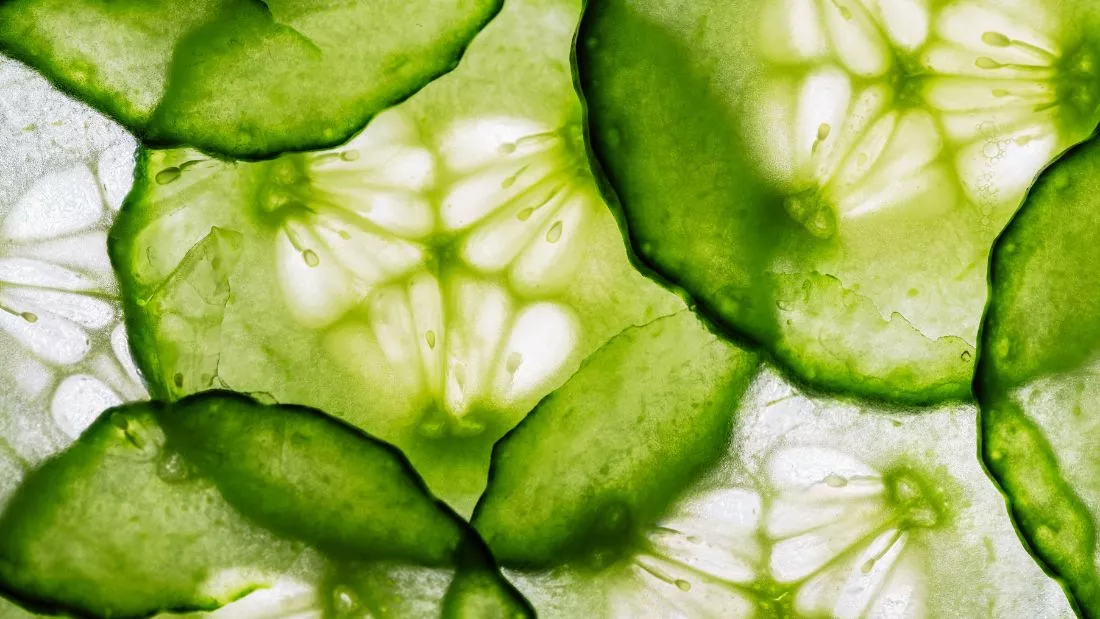Cucumber

You may have assumed that cucumber is a European native but it actually originated in India and was probably introduced to Europe by the Greeks or Romans. Nowadays, it’s grown across the world in many varieties although the ‘common’ cucumber is still the most popular type.
Cucumber nutrition
Surprise, surprise, cucumbers are mostly made up of water and so are very low in calories. This feature is great when you’re travelling as cucumbers provide a safe way to hydrate. Similarly, when it’s hot and you want something refreshing, cucumbers are certainly it, providing healthy hydration with no downsides.
Even though cucumbers are full of seeds, they contain very little fat and protein. In fact, cucumbers are not particularly rich in any nutrient but they contain small amounts of most vitamins and minerals and so help to top up your overall intake. Cucumber peel is a good source of vitamin K – vital for healthy blood clotting and bone health. A quarter of an unpeeled cucumber provides over 10 per cent of your recommended daily vitamin K intake.
And there’s another good argument for eating cucumber unpeeled – by peeling it, you remove a substantial amount of fibre, important for gut health, and antioxidants.
Antioxidants in cucumber
The humble cucumber contains a surprising amount of antioxidants that help to protect your cells from everyday damage and help to keep you healthy. Cucumber antioxidants include flavonoids, lignans and triterpenes, which also have anti-inflammatory and anti-cancer properties.
One type of triterpenes are compounds called cucurbitacins, which are responsible for the bitter taste of some cucumbers and are toxic in high doses. Wild cucumbers generally contain higher levels of cucurbitacins than cucumbers cultivated for consumption and are very bitter – this discourages wild animals from eating them. However, your common cucumber contains small amounts of cucurbitacins and these low levels have been found to be health-beneficial, helping to protect your body from cancer, atherosclerosis and inflammation in general.
Gherkins
Gherkins and cornichons are a specific variety of small cucumber, purposefully grown for pickling – preserving in vinegary brine which gives them the characteristic taste. It’s not the same process as fermenting, which is healthier, but let’s admit it – nobody eats gherkins for their health benefits, it’s the taste we’re after! Nevertheless, they are a good source of vitamin K with one large gherkin covering 20 per cent of your daily needs.
How to use cucumber?
Most of us simply eat cucumbers raw, in a salad, in a sandwich, as a snack or wrapped in sushi. See what else you can use them for – find inspiration at our Vegan Recipe Club recipes with cucumber!




